
| Vehicle | Curb weight | Difference from world's smallest | Weight to power ratio | 0—60 mph acceleration ratio | Consumption ratio |
|---|---|---|---|---|---|
| 1.8 t Biopower |
1440 kg / 3175 lbs |
1015 kg (2238 lbs) heavier | 8 kg to 1 hp | 180 kg/s (397 lbs/s) |
150 kg/L (331 lbs/L) |
| 1.9 TTiD |
1500 kg / 3308 lbs |
1075 kg (2371 lbs) heavier | 8 kg to 1 hp | 185 kg/s (408 lbs/s) |
268 kg/L (591 lbs/L) |
| 2.0 t Biopower |
1440 kg / 3175 lbs |
1015 kg (2238 lbs) heavier | 7 kg to 1 hp | 192 kg/s (423 lbs/s) |
140 kg/L (309 lbs/L) |
| 2.8 i V6 24V |
1555 kg / 3429 lbs |
1130 kg (2492 lbs) heavier | 6 kg to 1 hp | 219 kg/s (483 lbs/s) |
139 kg/L (306 lbs/L) |
| Vehicle | 1.8 t Biopower |
|---|---|
| Curb weight |
1440 kg / 3175 lbs |
| Difference from world's smallest | 1015 kg (1015 lbs) heavier |
| Weight to power ratio | 8 kg to 1 hp |
| 0—60 mph acceleration ratio | 180 kg/s (397 lbs/s) |
| Consumption ratio |
150 kg/L (331 lbs/L) |
| Vehicle | 1.9 TTiD |
| Curb weight |
1500 kg / 3308 lbs |
| Difference from world's smallest | 1075 kg (1075 lbs) heavier |
| Weight to power ratio | 8 kg to 1 hp |
| 0—60 mph acceleration ratio | 185 kg/s (408 lbs/s) |
| Consumption ratio |
268 kg/L (591 lbs/L) |
| Vehicle | 2.0 t Biopower |
| Curb weight |
1440 kg / 3175 lbs |
| Difference from world's smallest | 1015 kg (1015 lbs) heavier |
| Weight to power ratio | 7 kg to 1 hp |
| 0—60 mph acceleration ratio | 192 kg/s (423 lbs/s) |
| Consumption ratio |
140 kg/L (309 lbs/L) |
| Vehicle | 2.8 i V6 24V |
| Curb weight |
1555 kg / 3429 lbs |
| Difference from world's smallest | 1130 kg (1130 lbs) heavier |
| Weight to power ratio | 6 kg to 1 hp |
| 0—60 mph acceleration ratio | 219 kg/s (483 lbs/s) |
| Consumption ratio |
139 kg/L (306 lbs/L) |
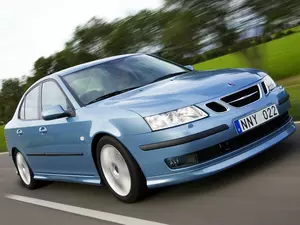
| Vehicle | Curb weight | Difference from world's smallest | Weight to power ratio | 0—60 mph acceleration ratio | Consumption ratio |
|---|---|---|---|---|---|
| 1.8 i 16V |
1380 kg / 3043 lbs |
955 kg (2106 lbs) heavier | 11 kg to 1 hp | 127 kg/s (280 lbs/s) | - |
| 1.9 TiD |
1500 kg / 3308 lbs |
1075 kg (2371 lbs) heavier | 10 kg to 1 hp | 167 kg/s (368 lbs/s) | - |
| 2.0 i 16V t |
1440 kg / 3175 lbs |
1015 kg (2238 lbs) heavier | 10 kg to 1 hp | 167 kg/s (368 lbs/s) |
145 kg/L (320 lbs/L) |
| 2.0 t |
1510 kg / 3330 lbs |
1085 kg (2393 lbs) heavier | 9 kg to 1 hp | 164 kg/s (362 lbs/s) |
161 kg/L (355 lbs/L) |
| 2.0 T |
1460 kg / 3219 lbs |
1035 kg (2282 lbs) heavier | 7 kg to 1 hp | 170 kg/s (375 lbs/s) |
154 kg/L (340 lbs/L) |
| 2.2 TiD |
1610 kg / 3550 lbs |
1185 kg (2613 lbs) heavier | 13 kg to 1 hp | 153 kg/s (337 lbs/s) |
252 kg/L (556 lbs/L) |
| 2.8 i V6 24V |
1555 kg / 3429 lbs |
1130 kg (2492 lbs) heavier | 6 kg to 1 hp | 207 kg/s (456 lbs/s) | - |
| Vehicle | 1.8 i 16V |
|---|---|
| Curb weight |
1380 kg / 3043 lbs |
| Difference from world's smallest | 955 kg (955 lbs) heavier |
| Weight to power ratio | 11 kg to 1 hp |
| 0—60 mph acceleration ratio | 127 kg/s (280 lbs/s) |
| Consumption ratio | - |
| Vehicle | 1.9 TiD |
| Curb weight |
1500 kg / 3308 lbs |
| Difference from world's smallest | 1075 kg (1075 lbs) heavier |
| Weight to power ratio | 10 kg to 1 hp |
| 0—60 mph acceleration ratio | 167 kg/s (368 lbs/s) |
| Consumption ratio | - |
| Vehicle | 2.0 i 16V t |
| Curb weight |
1440 kg / 3175 lbs |
| Difference from world's smallest | 1015 kg (1015 lbs) heavier |
| Weight to power ratio | 10 kg to 1 hp |
| 0—60 mph acceleration ratio | 167 kg/s (368 lbs/s) |
| Consumption ratio |
145 kg/L (320 lbs/L) |
| Vehicle | 2.0 t |
| Curb weight |
1510 kg / 3330 lbs |
| Difference from world's smallest | 1085 kg (1085 lbs) heavier |
| Weight to power ratio | 9 kg to 1 hp |
| 0—60 mph acceleration ratio | 164 kg/s (362 lbs/s) |
| Consumption ratio |
161 kg/L (355 lbs/L) |
| Vehicle | 2.0 T |
| Curb weight |
1460 kg / 3219 lbs |
| Difference from world's smallest | 1035 kg (1035 lbs) heavier |
| Weight to power ratio | 7 kg to 1 hp |
| 0—60 mph acceleration ratio | 170 kg/s (375 lbs/s) |
| Consumption ratio |
154 kg/L (340 lbs/L) |
| Vehicle | 2.2 TiD |
| Curb weight |
1610 kg / 3550 lbs |
| Difference from world's smallest | 1185 kg (1185 lbs) heavier |
| Weight to power ratio | 13 kg to 1 hp |
| 0—60 mph acceleration ratio | 153 kg/s (337 lbs/s) |
| Consumption ratio |
252 kg/L (556 lbs/L) |
| Vehicle | 2.8 i V6 24V |
| Curb weight |
1555 kg / 3429 lbs |
| Difference from world's smallest | 1130 kg (1130 lbs) heavier |
| Weight to power ratio | 6 kg to 1 hp |
| 0—60 mph acceleration ratio | 207 kg/s (456 lbs/s) |
| Consumption ratio | - |
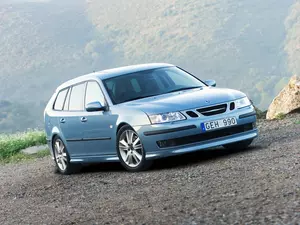
| Vehicle | Curb weight | Difference from world's smallest | Weight to power ratio | 0—60 mph acceleration ratio | Consumption ratio |
|---|---|---|---|---|---|
| 1.8 i 16V |
1405 kg / 3098 lbs |
980 kg (2161 lbs) heavier | 9 kg to 1 hp | 131 kg/s (289 lbs/s) |
158 kg/L (348 lbs/L) |
| 1.9 TiD |
1535 kg / 3385 lbs |
1110 kg (2448 lbs) heavier | 10 kg to 1 hp | 158 kg/s (348 lbs/s) | - |
| 1.8 i 16V Bio |
1405 kg / 3098 lbs |
980 kg (2161 lbs) heavier | 8 kg to 1 hp | 153 kg/s (337 lbs/s) |
121 kg/L (267 lbs/L) |
| 1.9 TTiD |
1535 kg / 3385 lbs |
1110 kg (2448 lbs) heavier | 9 kg to 1 hp | 176 kg/s (388 lbs/s) |
222 kg/L (490 lbs/L) |
| 2.0 i 16V Bio |
1455 kg / 3208 lbs |
1030 kg (2271 lbs) heavier | 7 kg to 1 hp | 167 kg/s (368 lbs/s) |
120 kg/L (265 lbs/L) |
| 2.0 i 16V t |
1455 kg / 3208 lbs |
1030 kg (2271 lbs) heavier | 8 kg to 1 hp | 169 kg/s (373 lbs/s) |
148 kg/L (326 lbs/L) |
| 2.0 i 16V T |
1460 kg / 3219 lbs |
1035 kg (2282 lbs) heavier | 7 kg to 1 hp | 170 kg/s (375 lbs/s) |
162 kg/L (357 lbs/L) |
| 2.8 i V6 |
1570 kg / 3462 lbs |
1145 kg (2525 lbs) heavier | 6 kg to 1 hp | 221 kg/s (487 lbs/s) |
134 kg/L (295 lbs/L) |
| 2.8 i V6 24V |
1570 kg / 3462 lbs |
1145 kg (2525 lbs) heavier | 6 kg to 1 hp | 212 kg/s (467 lbs/s) |
143 kg/L (315 lbs/L) |
| Vehicle | 1.8 i 16V |
|---|---|
| Curb weight |
1405 kg / 3098 lbs |
| Difference from world's smallest | 980 kg (980 lbs) heavier |
| Weight to power ratio | 9 kg to 1 hp |
| 0—60 mph acceleration ratio | 131 kg/s (289 lbs/s) |
| Consumption ratio |
158 kg/L (348 lbs/L) |
| Vehicle | 1.9 TiD |
| Curb weight |
1535 kg / 3385 lbs |
| Difference from world's smallest | 1110 kg (1110 lbs) heavier |
| Weight to power ratio | 10 kg to 1 hp |
| 0—60 mph acceleration ratio | 158 kg/s (348 lbs/s) |
| Consumption ratio | - |
| Vehicle | 1.8 i 16V Bio |
| Curb weight |
1405 kg / 3098 lbs |
| Difference from world's smallest | 980 kg (980 lbs) heavier |
| Weight to power ratio | 8 kg to 1 hp |
| 0—60 mph acceleration ratio | 153 kg/s (337 lbs/s) |
| Consumption ratio |
121 kg/L (267 lbs/L) |
| Vehicle | 1.9 TTiD |
| Curb weight |
1535 kg / 3385 lbs |
| Difference from world's smallest | 1110 kg (1110 lbs) heavier |
| Weight to power ratio | 9 kg to 1 hp |
| 0—60 mph acceleration ratio | 176 kg/s (388 lbs/s) |
| Consumption ratio |
222 kg/L (490 lbs/L) |
| Vehicle | 2.0 i 16V Bio |
| Curb weight |
1455 kg / 3208 lbs |
| Difference from world's smallest | 1030 kg (1030 lbs) heavier |
| Weight to power ratio | 7 kg to 1 hp |
| 0—60 mph acceleration ratio | 167 kg/s (368 lbs/s) |
| Consumption ratio |
120 kg/L (265 lbs/L) |
| Vehicle | 2.0 i 16V t |
| Curb weight |
1455 kg / 3208 lbs |
| Difference from world's smallest | 1030 kg (1030 lbs) heavier |
| Weight to power ratio | 8 kg to 1 hp |
| 0—60 mph acceleration ratio | 169 kg/s (373 lbs/s) |
| Consumption ratio |
148 kg/L (326 lbs/L) |
| Vehicle | 2.0 i 16V T |
| Curb weight |
1460 kg / 3219 lbs |
| Difference from world's smallest | 1035 kg (1035 lbs) heavier |
| Weight to power ratio | 7 kg to 1 hp |
| 0—60 mph acceleration ratio | 170 kg/s (375 lbs/s) |
| Consumption ratio |
162 kg/L (357 lbs/L) |
| Vehicle | 2.8 i V6 |
| Curb weight |
1570 kg / 3462 lbs |
| Difference from world's smallest | 1145 kg (1145 lbs) heavier |
| Weight to power ratio | 6 kg to 1 hp |
| 0—60 mph acceleration ratio | 221 kg/s (487 lbs/s) |
| Consumption ratio |
134 kg/L (295 lbs/L) |
| Vehicle | 2.8 i V6 24V |
| Curb weight |
1570 kg / 3462 lbs |
| Difference from world's smallest | 1145 kg (1145 lbs) heavier |
| Weight to power ratio | 6 kg to 1 hp |
| 0—60 mph acceleration ratio | 212 kg/s (467 lbs/s) |
| Consumption ratio |
143 kg/L (315 lbs/L) |
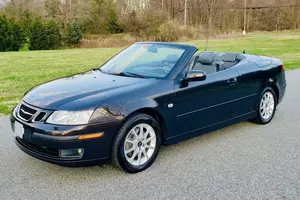
| Vehicle | Curb weight | Difference from world's smallest | Weight to power ratio | 0—60 mph acceleration ratio | Consumption ratio |
|---|---|---|---|---|---|
| 2.0 t |
1580 kg / 3484 lbs |
1155 kg (2547 lbs) heavier | 9 kg to 1 hp | 158 kg/s (348 lbs/s) |
163 kg/L (359 lbs/L) |
| 2.0 T |
1590 kg / 3506 lbs |
1165 kg (2569 lbs) heavier | 8 kg to 1 hp | 209 kg/s (461 lbs/s) |
177 kg/L (390 lbs/L) |
| Vehicle | 2.0 t |
|---|---|
| Curb weight |
1580 kg / 3484 lbs |
| Difference from world's smallest | 1155 kg (1155 lbs) heavier |
| Weight to power ratio | 9 kg to 1 hp |
| 0—60 mph acceleration ratio | 158 kg/s (348 lbs/s) |
| Consumption ratio |
163 kg/L (359 lbs/L) |
| Vehicle | 2.0 T |
| Curb weight |
1590 kg / 3506 lbs |
| Difference from world's smallest | 1165 kg (1165 lbs) heavier |
| Weight to power ratio | 8 kg to 1 hp |
| 0—60 mph acceleration ratio | 209 kg/s (461 lbs/s) |
| Consumption ratio |
177 kg/L (390 lbs/L) |
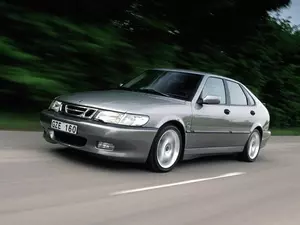
| Vehicle | Curb weight | Difference from world's smallest | Weight to power ratio | 0—60 mph acceleration ratio | Consumption ratio |
|---|---|---|---|---|---|
| 2.0 T |
1380 kg / 3043 lbs |
955 kg (2106 lbs) heavier | 7 kg to 1 hp | 200 kg/s (441 lbs/s) | - |
| 2.0i |
1295 kg / 2855 lbs |
870 kg (1918 lbs) heavier | 10 kg to 1 hp | 123 kg/s (271 lbs/s) | - |
| 2.0i SE |
1345 kg / 2966 lbs |
920 kg (2029 lbs) heavier | 10 kg to 1 hp | 128 kg/s (282 lbs/s) | - |
| 2.0 i T |
1380 kg / 3043 lbs |
955 kg (2106 lbs) heavier | 7 kg to 1 hp | 170 kg/s (375 lbs/s) | - |
| 2.0 i T SE |
1440 kg / 3175 lbs |
1015 kg (2238 lbs) heavier | 8 kg to 1 hp | 178 kg/s (392 lbs/s) | - |
| 2.0 i TS |
1370 kg / 3021 lbs |
945 kg (2084 lbs) heavier | 7 kg to 1 hp | 199 kg/s (439 lbs/s) | - |
| 2.2 TiD |
1560 kg / 3440 lbs |
1135 kg (2503 lbs) heavier | 12 kg to 1 hp | 159 kg/s (351 lbs/s) |
244 kg/L (538 lbs/L) |
| 2.3 i T SE |
1420 kg / 3131 lbs |
995 kg (2194 lbs) heavier | 9 kg to 1 hp | 135 kg/s (298 lbs/s) | - |
| 2.3 i |
1320 kg / 2911 lbs |
895 kg (1974 lbs) heavier | 9 kg to 1 hp | 139 kg/s (306 lbs/s) | - |
| 2.3 T |
1380 kg / 3043 lbs |
955 kg (2106 lbs) heavier | 6 kg to 1 hp | 212 kg/s (467 lbs/s) | - |
| Vehicle | 2.0 T |
|---|---|
| Curb weight |
1380 kg / 3043 lbs |
| Difference from world's smallest | 955 kg (955 lbs) heavier |
| Weight to power ratio | 7 kg to 1 hp |
| 0—60 mph acceleration ratio | 200 kg/s (441 lbs/s) |
| Consumption ratio | - |
| Vehicle | 2.0i |
| Curb weight |
1295 kg / 2855 lbs |
| Difference from world's smallest | 870 kg (870 lbs) heavier |
| Weight to power ratio | 10 kg to 1 hp |
| 0—60 mph acceleration ratio | 123 kg/s (271 lbs/s) |
| Consumption ratio | - |
| Vehicle | 2.0i SE |
| Curb weight |
1345 kg / 2966 lbs |
| Difference from world's smallest | 920 kg (920 lbs) heavier |
| Weight to power ratio | 10 kg to 1 hp |
| 0—60 mph acceleration ratio | 128 kg/s (282 lbs/s) |
| Consumption ratio | - |
| Vehicle | 2.0 i T |
| Curb weight |
1380 kg / 3043 lbs |
| Difference from world's smallest | 955 kg (955 lbs) heavier |
| Weight to power ratio | 7 kg to 1 hp |
| 0—60 mph acceleration ratio | 170 kg/s (375 lbs/s) |
| Consumption ratio | - |
| Vehicle | 2.0 i T SE |
| Curb weight |
1440 kg / 3175 lbs |
| Difference from world's smallest | 1015 kg (1015 lbs) heavier |
| Weight to power ratio | 8 kg to 1 hp |
| 0—60 mph acceleration ratio | 178 kg/s (392 lbs/s) |
| Consumption ratio | - |
| Vehicle | 2.0 i TS |
| Curb weight |
1370 kg / 3021 lbs |
| Difference from world's smallest | 945 kg (945 lbs) heavier |
| Weight to power ratio | 7 kg to 1 hp |
| 0—60 mph acceleration ratio | 199 kg/s (439 lbs/s) |
| Consumption ratio | - |
| Vehicle | 2.2 TiD |
| Curb weight |
1560 kg / 3440 lbs |
| Difference from world's smallest | 1135 kg (1135 lbs) heavier |
| Weight to power ratio | 12 kg to 1 hp |
| 0—60 mph acceleration ratio | 159 kg/s (351 lbs/s) |
| Consumption ratio |
244 kg/L (538 lbs/L) |
| Vehicle | 2.3 i T SE |
| Curb weight |
1420 kg / 3131 lbs |
| Difference from world's smallest | 995 kg (995 lbs) heavier |
| Weight to power ratio | 9 kg to 1 hp |
| 0—60 mph acceleration ratio | 135 kg/s (298 lbs/s) |
| Consumption ratio | - |
| Vehicle | 2.3 i |
| Curb weight |
1320 kg / 2911 lbs |
| Difference from world's smallest | 895 kg (895 lbs) heavier |
| Weight to power ratio | 9 kg to 1 hp |
| 0—60 mph acceleration ratio | 139 kg/s (306 lbs/s) |
| Consumption ratio | - |
| Vehicle | 2.3 T |
| Curb weight |
1380 kg / 3043 lbs |
| Difference from world's smallest | 955 kg (955 lbs) heavier |
| Weight to power ratio | 6 kg to 1 hp |
| 0—60 mph acceleration ratio | 212 kg/s (467 lbs/s) |
| Consumption ratio | - |
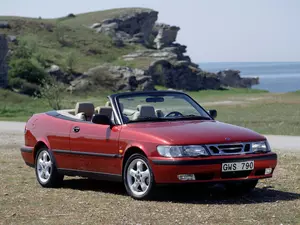
| Vehicle | Curb weight | Difference from world's smallest | Weight to power ratio | 0—60 mph acceleration ratio | Consumption ratio |
|---|---|---|---|---|---|
| 2.0 T |
1400 kg / 3087 lbs |
975 kg (2150 lbs) heavier | 7 kg to 1 hp | 203 kg/s (448 lbs/s) | - |
| 2.3 T |
1470 kg / 3241 lbs |
1045 kg (2304 lbs) heavier | 6 kg to 1 hp | 226 kg/s (498 lbs/s) | - |
| 2.3i |
1400 kg / 3087 lbs |
975 kg (2150 lbs) heavier | 9 kg to 1 hp | 147 kg/s (324 lbs/s) | - |
| 2.3 i SE |
1600 kg / 3528 lbs |
1175 kg (2591 lbs) heavier | 11 kg to 1 hp | 152 kg/s (335 lbs/s) | - |
| Vehicle | 2.0 T |
|---|---|
| Curb weight |
1400 kg / 3087 lbs |
| Difference from world's smallest | 975 kg (975 lbs) heavier |
| Weight to power ratio | 7 kg to 1 hp |
| 0—60 mph acceleration ratio | 203 kg/s (448 lbs/s) |
| Consumption ratio | - |
| Vehicle | 2.3 T |
| Curb weight |
1470 kg / 3241 lbs |
| Difference from world's smallest | 1045 kg (1045 lbs) heavier |
| Weight to power ratio | 6 kg to 1 hp |
| 0—60 mph acceleration ratio | 226 kg/s (498 lbs/s) |
| Consumption ratio | - |
| Vehicle | 2.3i |
| Curb weight |
1400 kg / 3087 lbs |
| Difference from world's smallest | 975 kg (975 lbs) heavier |
| Weight to power ratio | 9 kg to 1 hp |
| 0—60 mph acceleration ratio | 147 kg/s (324 lbs/s) |
| Consumption ratio | - |
| Vehicle | 2.3 i SE |
| Curb weight |
1600 kg / 3528 lbs |
| Difference from world's smallest | 1175 kg (1175 lbs) heavier |
| Weight to power ratio | 11 kg to 1 hp |
| 0—60 mph acceleration ratio | 152 kg/s (335 lbs/s) |
| Consumption ratio | - |